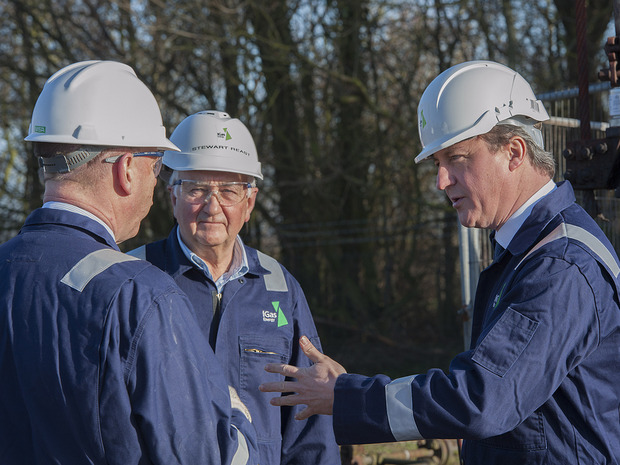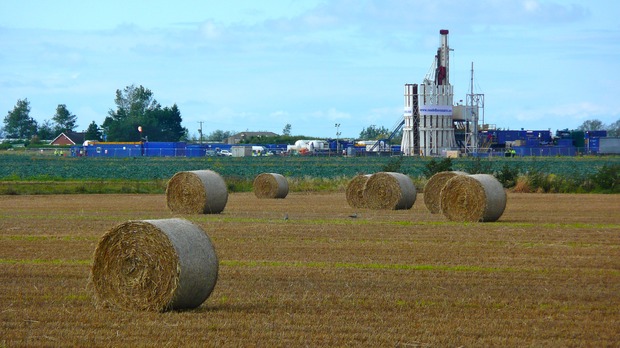Shale time
4 Nov 2014
Over the coming months the UK will get a much better idea of where and how much shale development will take place.
The UK is now entering a critical phase for its shale ambitions. Last month saw the closing of the bidding process for the 14th onshore oil & gas licensing round, the first such round where the bulk of applications are expected to be for the development of unconventional reserves.
Those working in the nascent industry expect it to be a defining period that will reveal both the areas of the country most likely to be developed and the companies likely to carry out the development.
“I expect to see a number of new entrants, and [the 14th licensing round] will really define the parts of the country that the public will see shale gas will come from,” says IGas chief executive Andrew Austin. Austin’s firm is bidding in this latest round, but already has other licensed sites on which it is working with Total and GDF Suez.
Conservative MP Dan Byles, who is the chairman of the All-Party Parliamentary Group for Unconventional Oil and Gas, agrees that the quality of new entrants - which will also include chemical company Ineos - will be a key marker of the potential for shale development to grow successfully.
“In many ways this will be barometer by which we can gauge continuing interest in the UK shale gas, and a lot of people are looking very closely to see if there are more big players entering,” says Byles.
Following the closing date on October 28th, the Department of Energy and Climate Change (DECC) will now spend the next few months assessing applications, with an announcement of license awards expected early next year.
Unknown quantities
For geological consultant Nick Riley, this cannot come soon enough. Riley worked on the British Geological Survey’s study for DECC on the Bowland shale, published last summer. The report concluded that while the shale gas basins were in many places thicker than those found in the US, they were often much deeper and lying in far more complex geology.
“Britain is blessed with thick dark shale and lots of coal in the carboniferous,” he says.
“[But] our geology is much more complicated than the US. It’s not a simple layer cake, as is the case in the US.”
Riley, who is BGS team leader for unconventional oil and gas, says it is impossible to estimate just how much of Britian’s shale resource is economically viable until significant exploration has taken place.
“We are nowhere near having enough information,” he says.
“We need to get on with exploring and testing. It’s ridiculous that we have not done a frack test since 2011. It’s in the interest of everyone because when we see big maps showing these vast areas of the country that might be developed, when actually there may be no resource, it doesn’t help anyone.”
Riley says debates over the rights and wrong of developing shale gas are meaningless until a true understanding of the nature of the shale reserves is established through exploration.
“Once this happens, then we can have a real debate, but until we know, it’s putting the cart before the horse,” he says.
Not that the awarding of licenses next year is likely to kickstart a significant amount of exploratory drilling.
As DECC Office of Unconventional Gas and Oil deputy head James Clarke points out, “having the license is just the start”.
“Once you have the license, the Health and Safety Executive (HSE) is involved in terms of scrutinising well designs, and then there is the environmental permitting by the Environment Agency and the local planning process,” he says.
Such a heavily regulated process prior to even exploratory drilling is one reason many in the industry believe there can be little comparison between US and UK shale development.
Recent research by American universities revealed that every single incidence of groundwater contaminated by methane that they examined was caused by well failures rather than methane released by the hydraulic fracturing process.
In addition to the safeguards provided by the HSE’s long track record of examining well designs, Environment Agency energy and climate change manager Mark Ellis-Jones says the environmental permitting process provides a raft of measures to protect the environment from the fracking process.
“Risks are only risks in any real sense if they can’t be controlled and that is where the environmental permitting regime comes in,” says Ellis-Jones.
“The risk to water supply is covered under abstraction licensing, groundwater is covered by groundwater permitting, wastes are covered by mining waste permits and radiation permits, and there’s a permit for water discharge activity.”
As part of this permitting process, says Ellis-Jones, the Environment Agency also requires operators to disclose the chemicals they use in hydraulic fracturing. This revealing of the chemical composition of a firm’s fracking fluid has to be made “upfront as part of the application”.
We need to get away from the voodoo around shale so that it is a normal part of the planning process
Dan Byles MP
The Environment Agency only issues a single permit for each project, with each of the various categories of permits described above included in that one project permit.
Ellis-Jones says the agency is currently processing onshore oil and gas permits “in 8 or 9 weeks”. The agency issued 15 such permits last year, currently has five permit applications in progress and another 28 in the pipeline.
Local battle
While prospective shale licensees might regard the environmental permitting and HSE well-design process as relatively straightforward, there is one hurdle that is anything but easy to clear: the local planning process.
This summer saw a handful of planning applications for shale test sites rejected, with one application by Celtiqe Energy for exploration refused by West Sussex Council on the grounds that truck movements associated with the site would have an adverse impact on local traffic conditions.
Byles says he believes the debate over shale gas is no longer once that exists at the national level – it is purely a fight between local and national interests.
“The issues aren’t at Westminster, they are at a local level,” he says.
“In some ways shale gas is not different to any other contentious planning issue. Quite often the clash is not party political but local versus national, like [rail link] High Speed 2.”
However, Byles does admit that shale gas is at the moment different from other planning objections in that it seems to have a “voodoo” around it with fears over its effect on drinking water and its potential to cause earthquakes.
He says he doesn’t believe science supports these wilder claims, and what is needed is for shale gas to be “normalised”.
“This doesn’t mean you will get rid of all objections,” he says.
“For example energy from waste plants still face objections. But we need to get away from the voodoo around shale so that it is a normal part of the planning process, and some projects will go through and some won’t.”
In North West England it is proving much harder to get that buy-in at the local level
IGas chief executive Andrew Austin
Austin says that objections are more likely to come from those areas with very little experience of the oil & gas industry, as IGas’ own experiences have shown.
He expects his company to begin drilling and flow testing at two sites – one in the Pennines and one in the East Midlands – next year. The regions’ contrasting histories have played a key role in local acceptance – or otherwise - of these projects, says Austin.
“In areas like the East Midlands where there is an existing hydrocarbons industry, local acceptance much greater as people understand extractive industries,” he says.
“In the North West it is proving much harder to get that buy-in at the local level.”
Byles says he believes that the local situation could improve once there are multiple wells operating and “local communities can say to journalists that they don’t notice the operating well”.
He adds that he has noticed a change in the focus of protestors: with many accepting that water pollution and earthquake fears have been discredited, protestors are instead focusing on shale gas from a climate change point of view.
In defence of shale, Byles argues that the case should be made that “this is not about burning more gas, it’s about burning UK gas rather than Qatari gas”, or burning gas rather than coal.
Even if that is the case, shale production still holds the potential to be a major source of emissions: according to a recent piece of guidance released by Emerson Process Management on best practice for zero emissions at shale gas installations, methane has a greenhouse gas impact 20 times greater than carbon dioxide.
Emerson Process Management Europe vice president Travis Hesketh says the best way of assuring the public that issues around shale gas emissions are being addressed is to ensure that there are robust guidelines for best practice and modern equipment to be used in UK sites.
“A significant amount of leakage is due to poor equipment,” says Hesketh.
According to Emerson’s research, venting from pneumatic controllers and pumps is the largest source of methane emissions in the US shale sector.
The research suggests the use of modern measurement and control instrumentation could significantly reduce these problems by allowing operators to detect faults and sources of fugitive emissions sooner.
Emerson’s research also proposes the introduction of so-called “Green Completions” for all UK shale sites (see box below).
Money talks
While industry will continue to do all it can to prove shale’s limited impact on the environment, it has also admitted that no amount of rhetoric can “sweeten” local communities in quite the same way as hard cash can.
Government has already promised local authorities they will be able to retain 100% of business rates levied on shale sites. As part of its reform of the trespass laws proposing that landowners are only consulted if there is any drilling activity less than 300m from the surface – currently making its way through parliament – the government has also obtained the industry’s agreement to pay local communities £20,000 for each unique horizontal well that extends by more than 200 metres laterally.
However, these proposals could be dwarfed by proposals unveiled by Ineos in September.
The chemical company announced it would be returning 6% of its revenues from UK shale production back to local communities. Home and landowners nearest the site would receive roughly two thirds of Ineos’ shale payments, with the remaining third going to the wider community to support facilities such as schools, parks, and even hospitals.
Ineos estimates that over the life of a single well, home and landowners would get over £1.3 million and the community £600,000. It estimates that the total cost of this giveaway could be £2.5 billion.
The proposal has proven an unwelcome one among Ineos’ rival developers and those responsible for taking schemes through planning at the local level.
“The more people are given money, the more people think there is a reason that they need to be compensated,” says Austin.
“We already have 100% business rates retention, which equals 3% of our revenues going straight through to the councils. There are a number of ways (to support communities) and some are more eye-catching than others, but I think we need a more balanced approach.”
Chorley Council head of planning Jennifer Moore agrees with Austin that the payments have the potential to further erode trust at the local level.
“When I hear 6% revenue stream, most members of the communities I serve will smell a rat,” she says.
“They will be suspicious.”
Moore adds that incentives can also raise ethical concerns among planners, as having large amounts of cash on the table makes it difficult for them to “responsibly assess planning applications”.
“In my experience the carrot of an income stream is causing quite a few difficulties over objecting to proposals,” she says.
The test of whether financial offers to communities and landowners really can help tip British public opinion back in favour of fracking is likely to occur next year, as those firms awarded licenses under the 14th round enter the local planning process.
“The next 12-18 months will be a critical time to see how many wells are flowing,” says Byles.
“If none are flowing by 2016, then we have clearly lost momentum. I don’t expect to see huge shale gas development for many years, but when it does get moving, it is here to stay.”
Green Completions
After construction a well must be cleaned up before it is ready to produce oil or gas. Any fluids, sand, coal particles, or drill cuttings within the well bore must be removed.
The conventional method for carrying out this “completion” is to pump air down the well, which lifts the waste fluids and solids out.
The solid and liquid waste materials are then dumped into a pit or tank, and any gas that is removed is flared or vented to the atmosphere.
Well completions that involve hydraulic fracturing result in a higher rate of flowback than most conventional well completions, due to the large quantities of water and proppant (mainly sand) used in the fracking process.
This flowback is generally composed of a mixture of fracking fluids with reservoir gas and liquids.
Venting the gas means allowing methane emissions with a greenhouse gas effect 20 times greater than carbon dioxide to escape into the atmosphere.
Flaring can reduce these emissions by 95%, but the Environment Agency has applied a ban on flaring at shale sites except in the rarest of circumstances.
Given that both flaring and venting also waste vital gas resources, having an impact on a project’s profitability, alternatives methods of completion have been sought in the US shale industry.
Proving most popular are “Green Completions”, also known as Reduced Emission Completions, which like flaring reduce emissions by 95% but can also retain vital hydrocarbons for future sale.
In these completions the gas that comes to the surface is separated from fluids and solids using a temporary system comprising a set of piping connections and vessels that include a plug catcher, a sand trap and a three-phase separator.
The plug catcher is connected to the wellhead and is used to remove any large solids from the drilling and completion to avoid damaging the other separation equipment.
The sand trap removes finer solids present in the production stream, while the three-phase separator removes water and condensate from the gas.
Liquid hydrocarbons may be collected during completion and sold for additional revenue. Water is typically stored in water tanks for later treatment or disposal. If necessary, captured gas may enter a portable dehydrator at the well site to remove heavy moisture from the gas before it enters the sales pipeline.
- Everyone quoted in this article was speaking at the European Shale Gas and Oil Summit in London in September.








